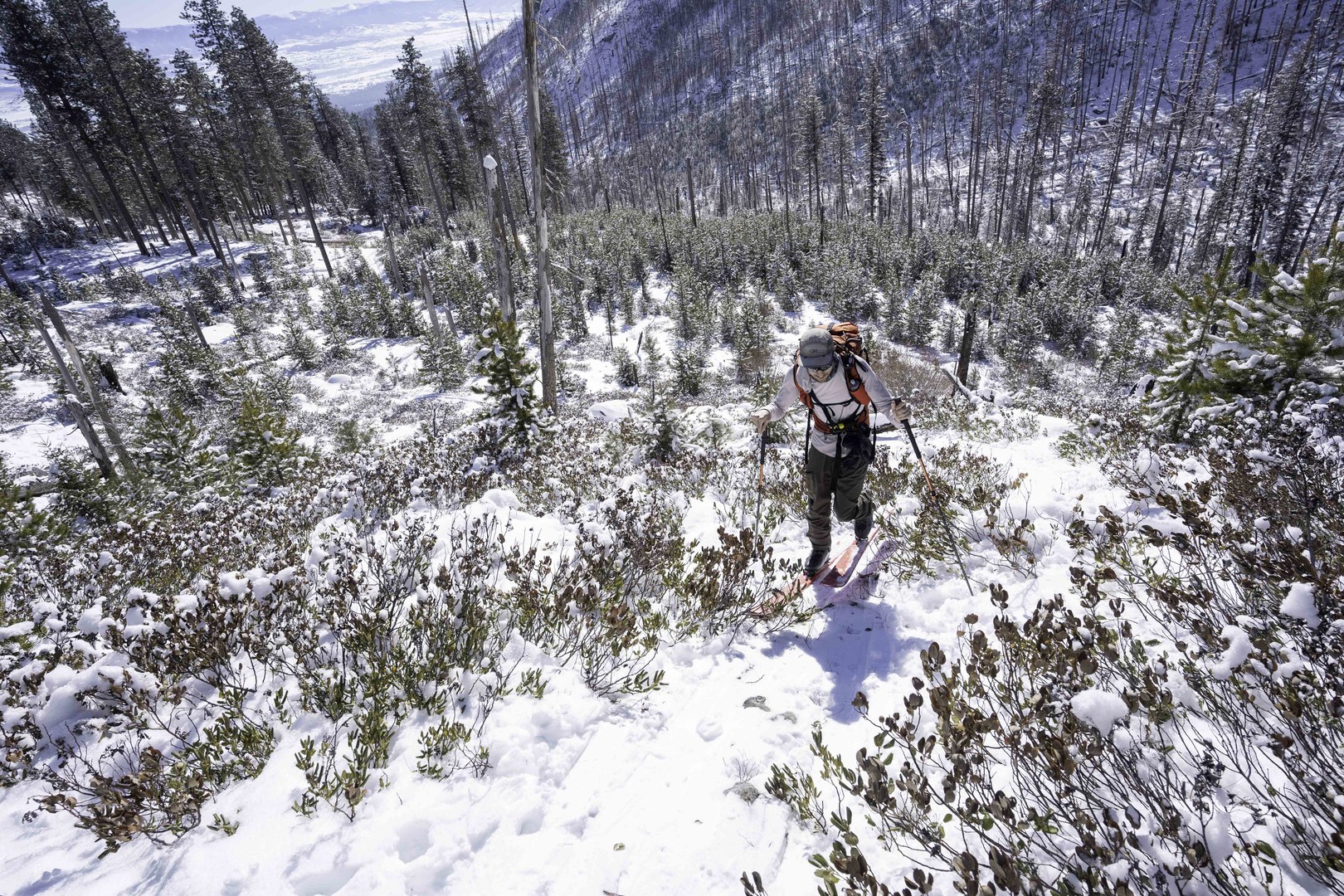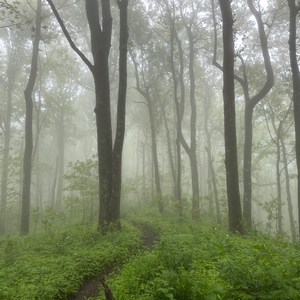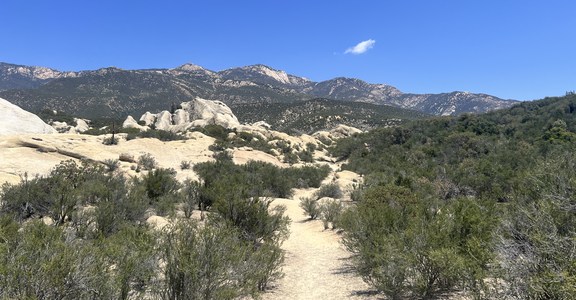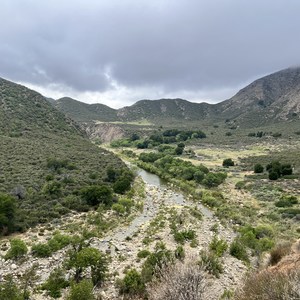You are here
Gash Knob (aka "MiniGash") features great bowls and fun spaced trees with generally good snow quality!
The Basics
-
Naming: If this is your first time in the area, the naming can get a bit complicated. This whole area is called "Gash", but it's actually two different zones:
-
Gash Point (8,886'), for which people generally ski the prominent bowl southeast of the Point
-
"Gash Knob", which is 1.2 mi southeast of Gash Point and unnamed on most maps, but is ~8,450' tall. Since Gash Point and Gash Knob sound super similar, some call Gash Knob "MiniGash", as it's a bit shorter than the main Gash.
-
If this is too confusing, don't worry, both Gash Point and Gash Knob are great skiing.
-
-
Seasonality/Snow: Depending on the snowpack, Gash Knob can generally be skied from December to April from the car, and you can ski it later if you're down to hike.
-
Parking: Be prepared to park a mile away from the lower trailhead, cars often get stuck in drifts near the lower trailhead.
Equipment
Depending on when you’re going and what the snow is like, you’ll need some equipment to keep having fun. There are the obvious ones, including your backcountry ski/splitboarding setup, personal safety gear (helmets, goggles, medkit, etc.), and appropriate layers to keep yourself warm and dry. And then there's the more technical gear
-
Avalanche safety gear: beacon, shovel, probe, and the know-how to use it!
-
Traction: you might benefit from ski crampons on the lower skin track, it can get icy.
-
Radios: Radios are becoming more and more common in the backcountry skiing world, as they dramatically improve communication and safety.
-
GPS/Navigation: Bring it and know how to use it!
A disclaimer on this description and included GPX track - this line was skied on a single day with certain snow and avalanche conditions. The track described is a reasonable way to move through this terrain, and the description below mentions some of the hazards found during the trip. However, conditions may be significantly different when you visit this area. The advice in this trip report is not meant to be followed perfectly - you will need to adapt the route for the conditions you find and for your party’s abilities.
The Trip
For the Bitterroots, this is a pretty easy tour, though you'll need to navigate some scrappy trees. From wherever you managed to get your car, skin to the lower trailhead, then up the skintrack to the upper trailhead (at 5,700'). Then make your way through the rocks and tight trees generally traveling northwewst. At 6,200', you'll likely come to a fork in the skin track, head left and west, gaining a ridgeline. Follow it west, being cautious at the steep rollover ~7,300'. Continue up to 8,200', where there's an easy entrance into the big bowl, though you can also summit Gash Knob if you want the views.
From the top, pick whatever line inspires you and rip - you've got a good lappable 1,500' run ahead of you!
Once you're ready to head back to the car, pick your way through the cars to the upper trailhead, then follow the luge track back to your car.
If snow levels are extremely low and the lower skin track doesn't have much snow, you can skin the road between the upper and lower trailhead but this requires more climbing and a lot of hassle. It's easier just to boot down from the upper trailhead.
Please post an observation to the West Central Montana Avalanche Center after your trip, describing the travel conditions and snow stability you found! Submitting avy observations and writing trip reports on forums are great ways to contribute to the community and improve avalanche forecasts. It's also incredibly valuable to read the observations and trip reports written by others, as they'll help keep you updated on what the mountains are doing on a day-to-day basis. This will help determine whether you have a fun time next time you get out!

















Comments
Sign In and share them.